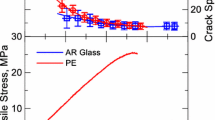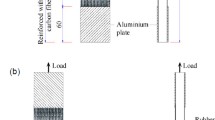Abstract
Strain Hardening Cement Composites, SHCC hereafter, demonstrate excellent mechanical behavior showing tensile strain hardening and multiple fine cracks. This strain hardening behavior improves the durability of concrete structures employing SHCC and the multiple fine cracks enhance structural performance. Reliable tensile performance of SHCC enables us to design structures explicitly accounting for SHCC’s tensile properties. Reinforced SHCC elements (R/SHCC) indicate large energy absorbing performance under large seismic excitation.
You have full access to this open access chapter, Download chapter PDF
Similar content being viewed by others
Keywords
These keywords were added by machine and not by the authors. This process is experimental and the keywords may be updated as the learning algorithm improves.
Strain Hardening Cement Composites, SHCC hereafter, demonstrate excellent mechanical behavior showing tensile strain hardening and multiple fine cracks. This strain hardening behavior improves the durability of concrete structures employing SHCC and the multiple fine cracks enhance structural performance. Reliable tensile performance of SHCC enables us to design structures explicitly accounting for SHCC’s tensile properties. Reinforced SHCC elements (R/SHCC) indicate large energy absorbing performance under large seismic excitation.
Reinforced concrete structures are subjected to various types of loading, such as dead load, live load, and seismic load. Against those loads, R/SHCC elements can be designed by superimposing re-bar performance and SHCC’s tensile performance. The estimation of SHCC’s shear resistance contribution in design, which is deduced from SHCC’s tensile property, requires various investigations since the shear resistance mechanism is usually complicated.
This State-of-the-Art Report is written collectively by members of Sub-committee three of the RILEM TC 208-HFC. The report focuses on flexural design, shear design, FE modeling and anti-seismic design of R/SHCC elements as well as application examples. Establishing design methods for new materials usually leads to exploring application areas and this trend should be demonstrated by collecting actual application examples of SHCC in structures.
Exploring SHCC applications necessitates establishing structural design and construction practice manuals at a very early opportunity. Hence, the Japan Society of Civil Engineers published the “Recommendations for design and construction of high performance fiber reinforced cement composite with multiple cracks” in 2007, which contains technical knowledge accumulated in conjunction with the activity of RILEM TC 208-HFC. This recommendation can be freely obtained from the website of JSCE. The RILEM TC 208-HFC Subcommittee three activities described in this report are intended to develop more reliable and practical recommendations by reflecting the latest research results.
(K. Rokugo)
Author information
Authors and Affiliations
Corresponding author
Editor information
Editors and Affiliations
Rights and permissions
Copyright information
© 2013 RILEM
About this chapter
Cite this chapter
Rokugo, K., Kanda, T. (2013). Introduction. In: Rokugo, K., Kanda, T. (eds) Strain Hardening Cement Composites: Structural Design and Performance. RILEM State-of-the-Art Reports, vol 6. Springer, Dordrecht. https://doi.org/10.1007/978-94-007-4836-1_1
Download citation
DOI: https://doi.org/10.1007/978-94-007-4836-1_1
Published:
Publisher Name: Springer, Dordrecht
Print ISBN: 978-94-007-4835-4
Online ISBN: 978-94-007-4836-1
eBook Packages: EngineeringEngineering (R0)




